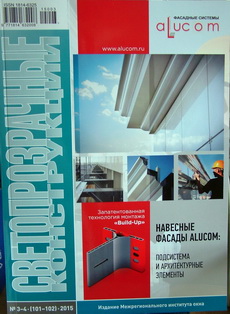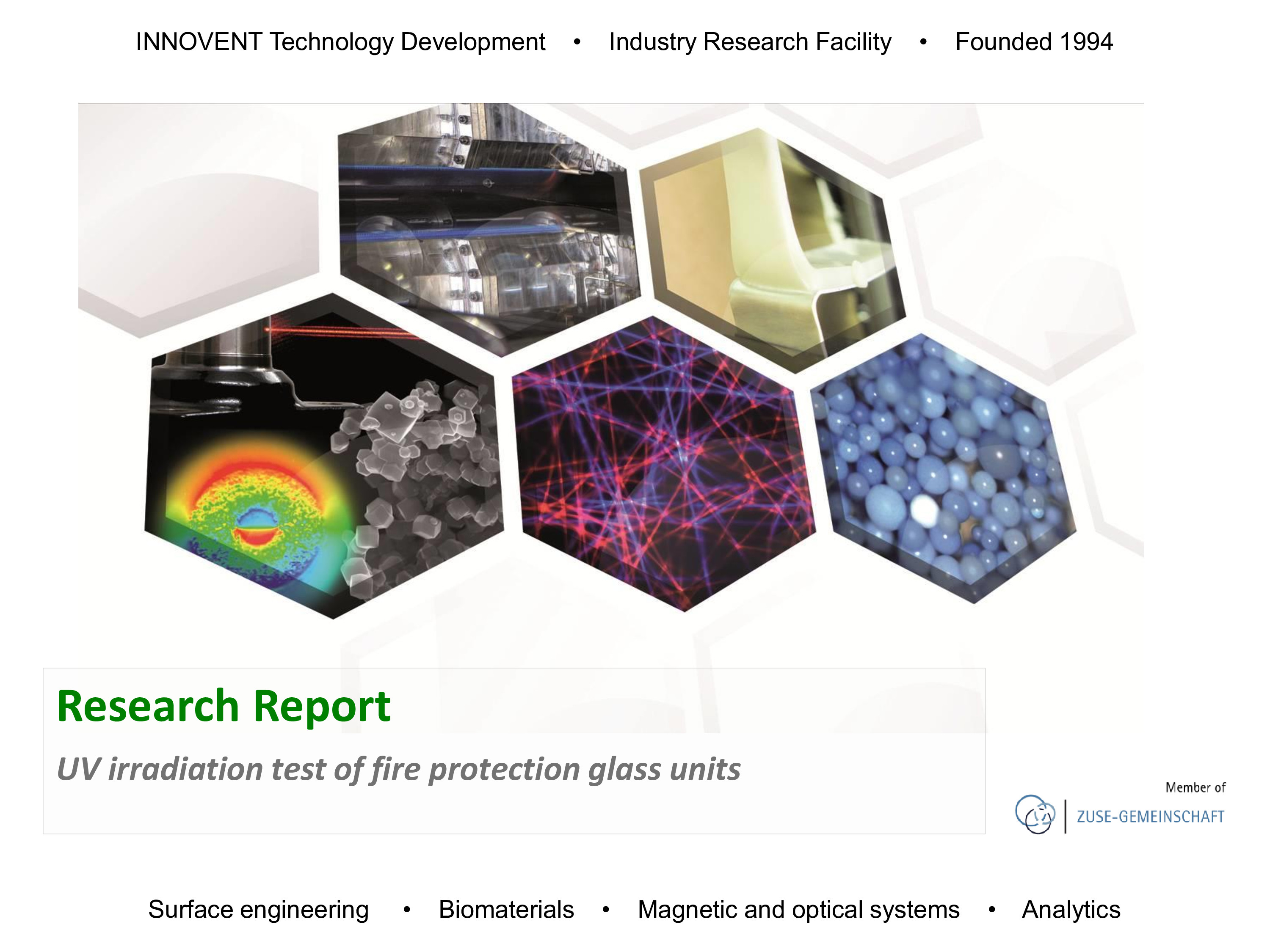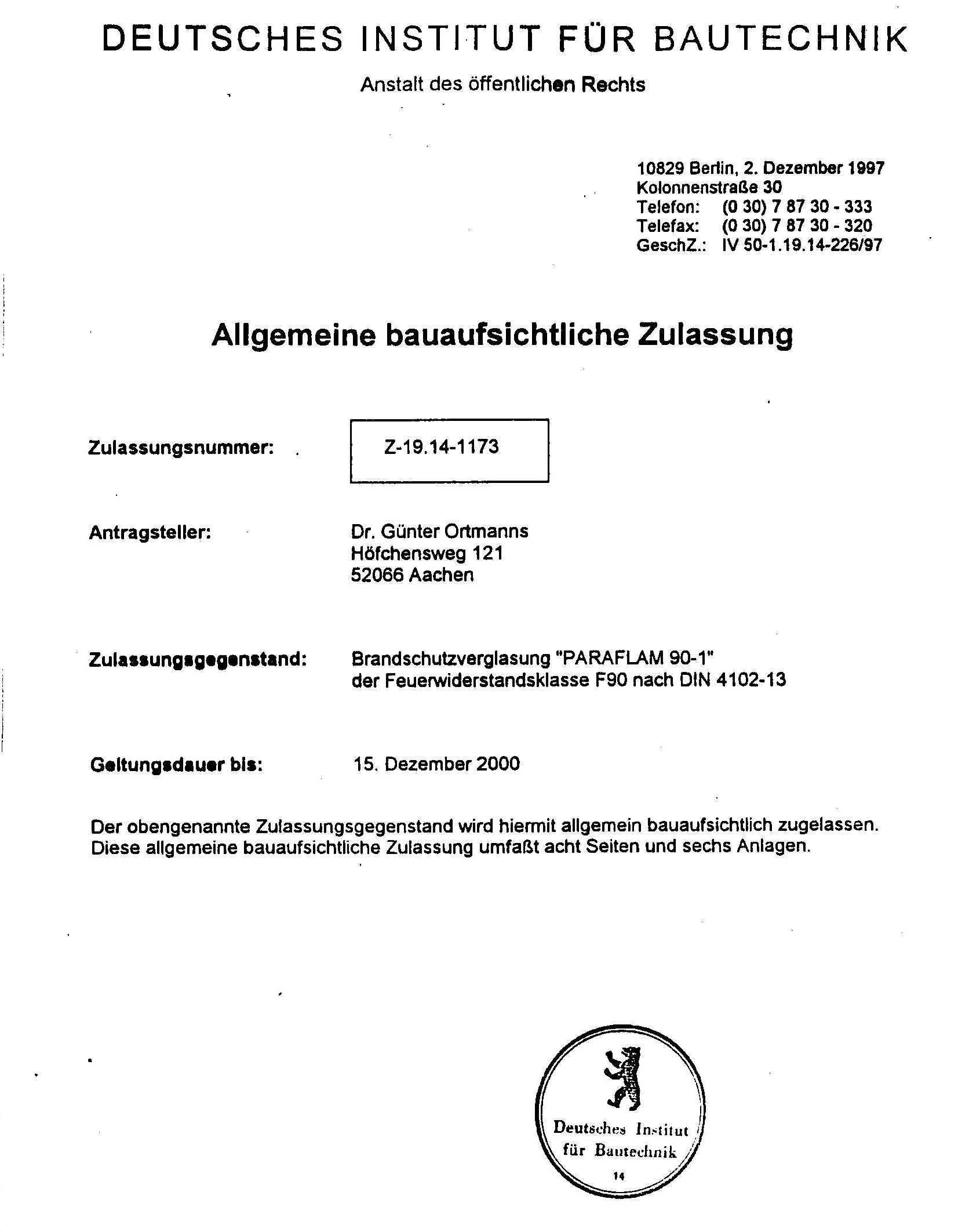Documents and publications
 |
 |
| General guidelines on operation and
glazing of fire resistant glass PARAFLAM |
Aktuellen Tendenzen in einer Entwicklung von Brandschutzglas (Übersetzung aus dem Russischen) |
 |
 |
|
Calculation of fire resistivity (Manucript submitted to Scopus) . |
. Allgemeine bauaufsichtliche Zulassung: PARAFLAM 30 |
 |
 |
|
UV irradiation test of fire protection glass units |
. Allgemeine bauaufsichtliche Zulassung: PARAFLAM 90 |
General guidelines on operation and glazing of fire resistant glass PARAFLAM
1. Glass is assembled into frames that correspond in their protective properties to the glass used
2. During installation, storage of products and during the operation is not allowed:
- mutual contact of products, as well as strikes against hard objects;
- wiping products with a hard cloth and a cloth containing scratching impurities, as well as hitting hard objects;
- cleaning the dry glass with wiper blades without the supply of washing fluid.
- when mounting and moving, glass larger than 1.4 m may be moved and installed only in a vertical position
- the glass should be stored in closed dry heated premises in unpacked form in a vertical position at an angle of 5 to 15 ° to the vertical on special supports covered with shock- absorbing material
3. Products should not be subjected to secondary mechanical and other types of processing, which can change their properties and performance characteristics specified in TU 5924- 001-79710207-14, except for actions allowed and recommended by the manufacturer
4. When installing glass the location of the support blocks and bearing pads in the profile should be done taking into account the profile deformation under load. The width of the support block must match the width of the glass. Supporting blocks should be made of a material that does not deform under the weight of glass.
5. In case the fire-resistant glass is used as a part of a double-glazed window, the double- glazed window is always installed with fire-resistant glass inside the room.
6. The glass must be in contact with the fire protection structure through a suitable ceramic elastic tape with closed pores, for example, Kerafix 2000, or Kerafix Flexit, manufactured by Gluske. Overcompression of the fire glass during installation may lead to delamination. The use of acid-based silicone is not allowed. Do not glue the glass to the structure on both sides.
- In a fire-resistant construction, glass is installed on the support blocks of hardwood or through non-flammable glazing blocks, for example, Flammi glazing blocks, manufactured by Gluske
- If glass is used as a translucent element in a partition using “aquapanels”, glass- magnesium sheets or sheets GVL/GKL, then the partition on top of the plates must be primed and glued with ceramic flexible tape.
7. To ensure the declared characteristics of fire resistance, it is necessary to comply with the installation requirements recommended by the manufacturer of the fire-resistant profile system. Installation of products should be carried out according to the technological documentation of profile system manufacturer. Minimally necessary requirements relate to continuous insulation of the surface of the edge of the glass, the edges of the glass and the frame. The only way to ensure these requirements is to prevent a large heat flow through the fixing of the glass in the profile. This requirement is achieved by heat insulation and hermetic sealing the edges of the glass, which must retain its properties throughout the entire time of fire testing.
